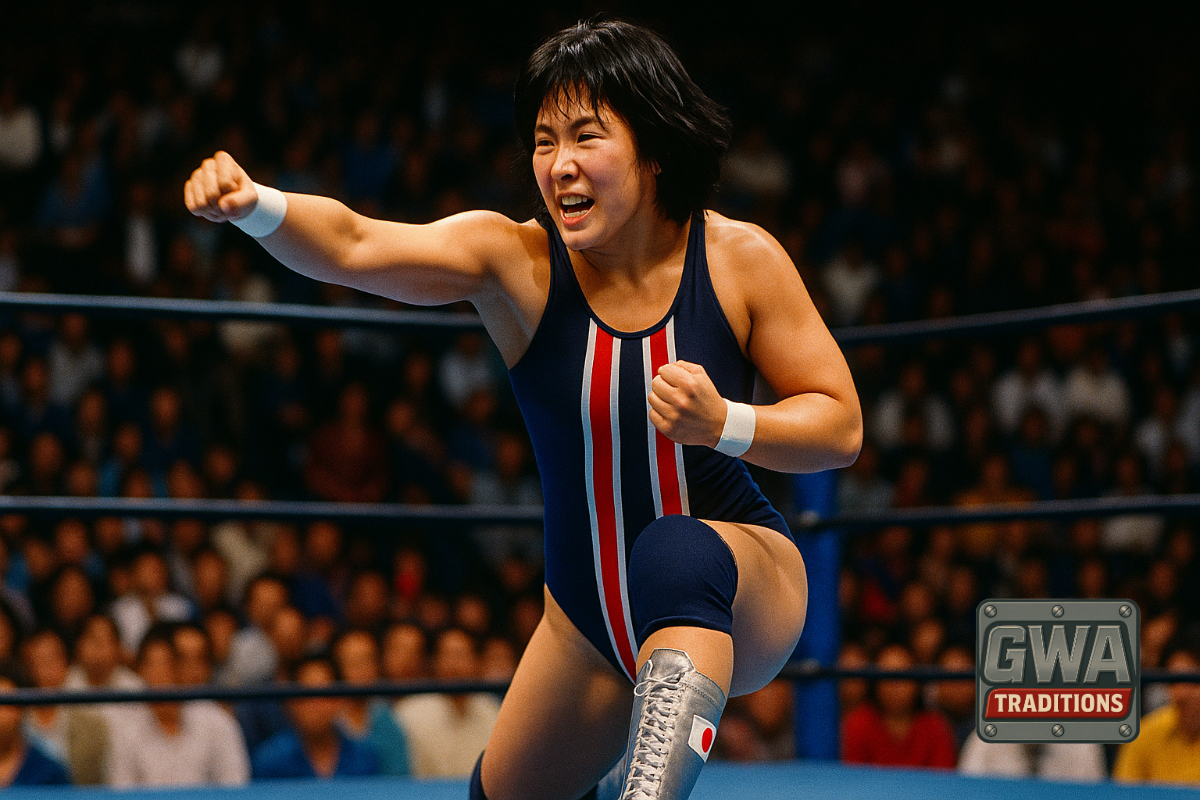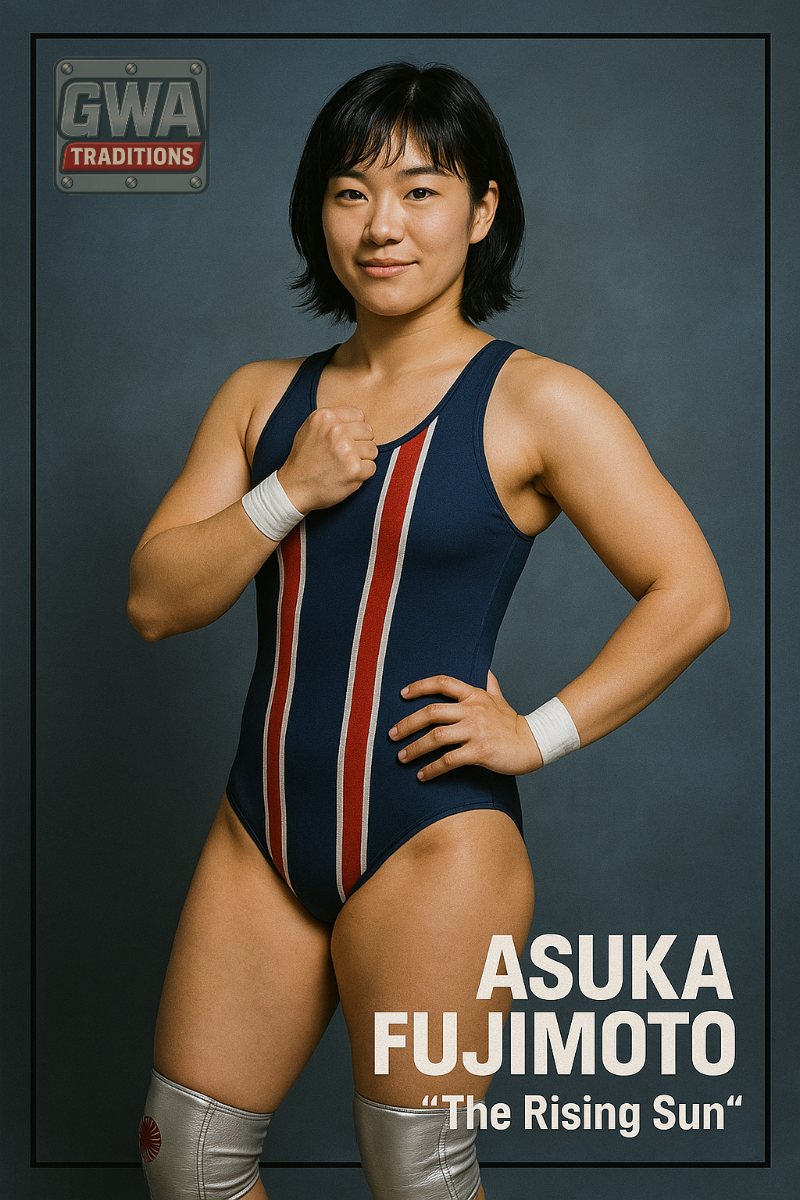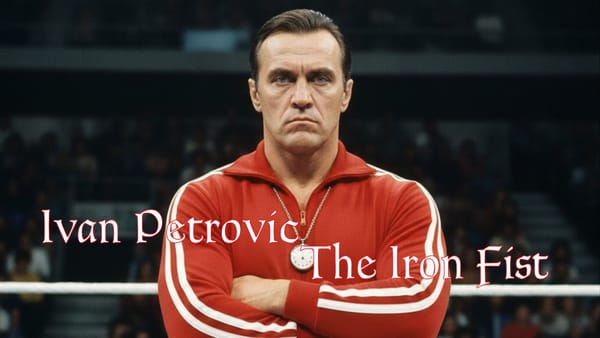Asuka Fujimoto, The Rising Sun
A disciplined warrior whose lightning-fast striking and technical precision captivated Bushido Pro before bringing her code of honor to the GWA. Her blend of martial arts mastery and authentic connection with fans made her the most successful international acquisition of the Traditions Era.

BASIC INFORMATION
Ring Name: Asuka Fujimoto
Nickname(s): "The Rising Sun"
Origin: Osaka, Japan
Height: 5'7"
Weight: 145 lbs
Finishing Move: Rising Sun Submission (Octopus Hold)
Entrance Music: "Warrior's Path" by John Collins (instrumental with traditional Japanese elements)
CHARACTER PROFILE
Background
Trained in karate since age five, Asuka rejected traditional expectations placed on Japanese women to pursue professional wrestling. After mastering her craft in Bushido Pro from 1984-1988, she became their Women's Champion twice and formed "The Cherry Blossoms" tag team inspired by the popular Crush Gals. When Jack Carson approached Matsuda about a talent exchange to revitalize GWA, Asuka saw an opportunity to bring her disciplined style to American audiences while honoring wrestling traditions across cultures.
Personality Traits
- Honorable and respectful of wrestling traditions
- Intensely competitive but always sporting
- Quiet determination with explosive in-ring energy
- Humble in victory, gracious in defeat
PRESENTATION

Physical Appearance
Asuka enters arenas in a striking red and white kimono-inspired robe with rising sun imagery on the back. Her in-ring attire features a one-piece athletic wrestling suit ("unitard style") in deep navy blue or black with vertical lightning-stripe designs in red, white, and electric blue. Her black hair is cut in a wet, layered bob with bangs that often fall into her eyes during intense matches, adding to the gritty realism of her fights.
She meticulously wraps her wrists in white tape, a visible ritual of preparation that fans came to recognize. For championship matches, she sometimes switches to a red-dominant variant with gold trim. Her mid-calf wrestling boots in metallic silver or gold feature and occasional knee pads with Rising Sun motifs in red stitching.
Ring Style
A masterful technical wrestler with devastating striking ability, Asuka blends traditional Japanese women's wrestling (joshi puroresu) with martial arts influences. Known for rapid-fire kicks, precise submissions, and surprising power moves despite her size. Her matches tell stories of technique versus power, East versus West, and tradition versus innovation.
Signature Moves:
- Crimson Blossom Kick (roundhouse kick to the head)
- Shining Horizon (springboard crossbody from the second rope)
- Dragon's Embrace (rear naked choke transitioned into a body scissors)
- Sunflare Suplex (northern lights suplex with bridge)
AUDIENCE CONNECTION
Catchphrases
- "Honor in battle, respect in victory"
- "The sun rises on a new challenge"
- "My spirit cannot be broken"
Fan Interaction
Developed a ritual of bowing deeply to the crowd before and after matches. Over time, audiences began returning the bow in a unique show of respect. Created special fan clubs called "Sunrise Societies" in each territory, embracing American fan culture while maintaining her Japanese identity. Her authentic connection transcended language barriers, with fans often chanting "Asuka! Asuka!" in synchronized support.
LEGACY
Asuka Fujimoto represented the successful fusion of Japanese and American wrestling traditions during the Heritage Era. Her arrival marked the GWA's commitment to global wrestling excellence despite market pressures. She demonstrated that women's wrestling could headline cards based on technical merit rather than gimmicks.
When other promotions were shifting toward more cartoonish characters, her authentic presentation reinforced the GWA's commitment to wrestling as a serious athletic competition. Television ratings consistently spiked during her segments, proving that tradition-focused wrestling could still connect with audiences when presented with authenticity and excellence.
BEHIND THE CURTAIN
Behind the confident in-ring persona, the real Asuka was navigating significant personal challenges. Having left her traditional family against her father's wishes, she carried a quiet grief and struggled with self-doubt while adjusting to life in 1980s America. The language barrier, isolation on the road, and cultural differences created personal struggles that never appeared on screen.
Her passion for photography became her private escape, taking Polaroids of every town she visited—collecting memories she "was never supposed to have." This personal journey of sacrifice and courage infused her character with authenticity that resonated with fans.





